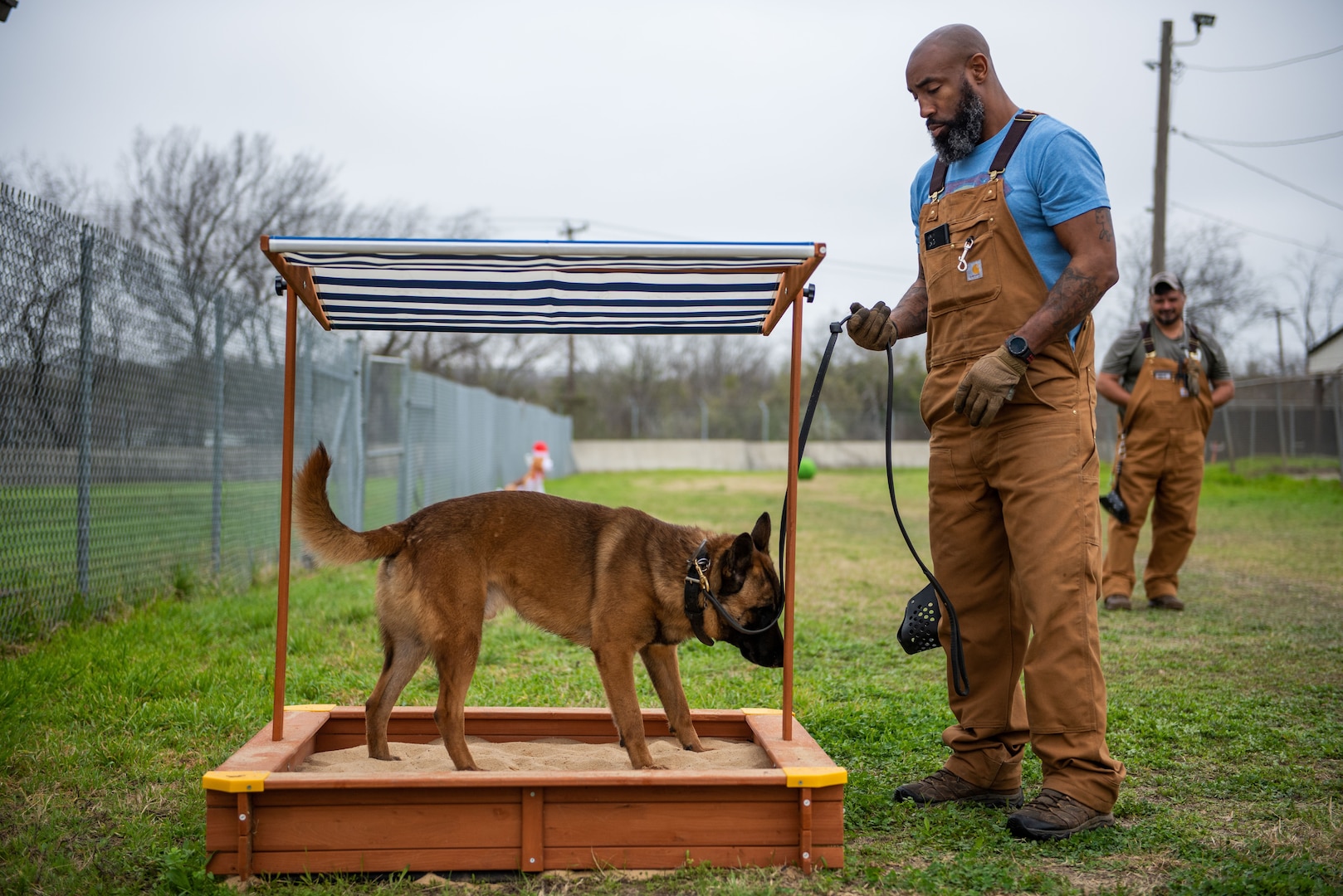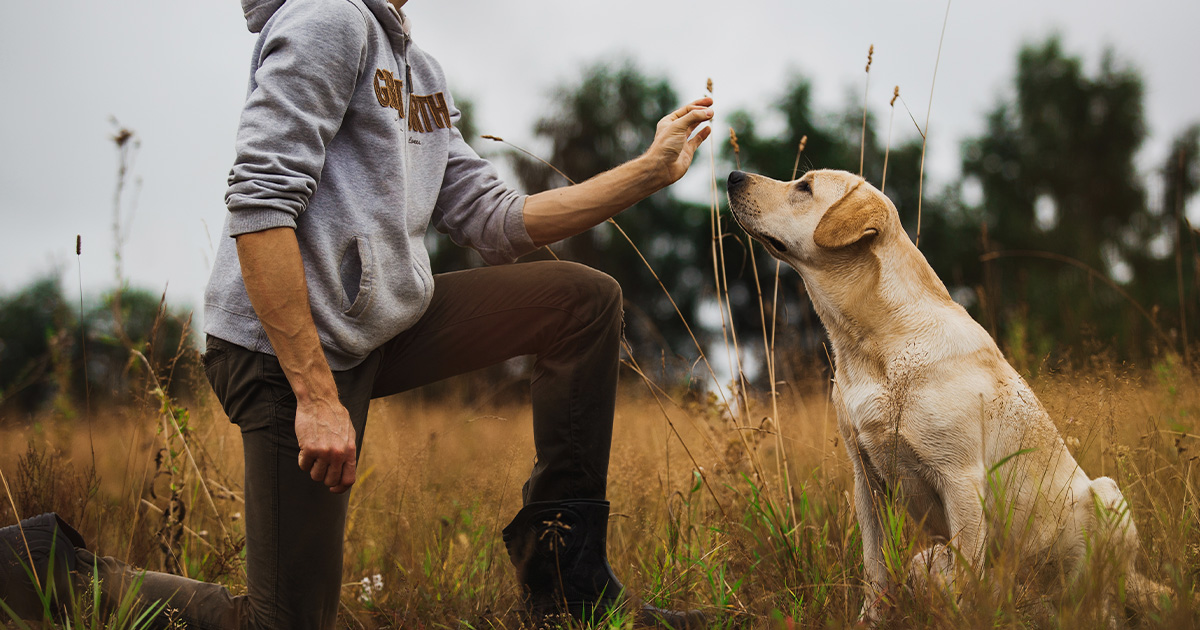How Professional Dog Training Can Enhance Your Dog’s Skills and Behavior
How Professional Dog Training Can Enhance Your Dog’s Skills and Behavior
Blog Article
Novice's Guide to Successful Pet Training in the house
Efficiently training a dog at home needs a nuanced understanding of canine actions and efficient communication methods. Developing clear training objectives, utilizing high-grade rewards, and preserving consistency across household participants are essential elements. Integrating training right into day-to-day regimens can improve both engagement and retention.
Understanding Canine Behavior
Understanding pet habits is essential for efficient training and cultivating an unified partnership in between humans and their canine buddies. Dogs interact mostly via body movement, articulations, and faces, making it important for owners to interpret these signals precisely. Acknowledging behaviors such as tail wagging, roaring, or shrinking can give insights right into a dog's mood and purposes.

Common behavior issues, such as aggressiveness, anxiety, or excessive barking, typically come from misunderstandings or unmet requirements. Observing and dealing with these issues immediately can prevent escalation and make sure a favorable training experience. By promoting a deep understanding of pet habits, proprietors can customize their training methods to match their canine companions, eventually causing a mannerly and contented pet.
Essential Educating Devices
A well-appointed training space can dramatically improve the effectiveness of canine training at home. Necessary training devices guarantee that both the pet and the trainer can participate in effective sessions that foster knowing and bonding.

Spending in a tough chain and a comfortable, well-fitting collar or harness is crucial for security and control. These devices help develop boundaries and guarantee the pet remains protected during training. In addition, an assigned training area, free from diversions, aids focus for both the fitness instructor and the pet dog.
Educating aids such as training pads, cones, or agility equipment can also enhance the experience by presenting selection and obstacles. Having a notebook or electronic app for tracking progress can be indispensable, permitting you to keep in mind successes and areas for enhancement. Making use of these necessary tools will certainly develop a favorable training environment and lay the foundation for efficient understanding.
Producing an Educating Routine
Developing a consistent training routine is vital for efficient dog training at home. A well-structured routine not only aids in strengthening desired actions however also provides your pet dog with a feeling of security and predictability. To produce an efficient training regular, begin by recognizing details training goals, such as basic commands, leash walking, or housebreaking.
Pick a designated time each day for training sessions, ideally when your canine is sharp and receptive. Procedure needs to be short, approximately 5 to 15 minutes, to keep focus and avoid exhaustion. Consistency in timing and setting will enhance your canine's learning experience.
Incorporate training into everyday activities to strengthen skills. For example, method commands throughout walks or nourishment, which incorporates discovering right into natural regimens. Additionally, continue to be adaptable and change the regular as necessary, accommodating your dog's energy degrees and state of mind.
Favorable Reinforcement Methods
Positive support methods are basic to effective pet training, advertising wanted habits through benefits instead than punishment. This approach utilizes favorable stimulations, such as treats, praise, or playtime, to encourage pet dogs to duplicate specific activities. The keystone of this strategy is timing; incentives should be provided immediately following the preferred behavior to produce a clear association.
When executing favorable support, it is essential to pick benefits that are encouraging for your pet. High-value treats, such as small items of hen or cheese, can be specifically reliable during training sessions. Additionally, differing the benefits can maintain your pet dog's passion and excitement.
Start with straightforward commands, like "sit" or "remain," and gradually progress to more complicated tasks. Consistency is vital; guarantee that all relative use the same commands and incentive systems to stay clear of complication.
In addition, it is vital to continue to be patient and stay clear of disappointment. Canines, like human beings, learn at their very own rate. By fostering an encouraging training environment with positive support, you can improve your canine's discovering experience while enhancing the bond between you and your hairy friend, preparing for effective training outcomes.
Typical Training Obstacles
While training a dog in your home can be a gratifying experience, it typically features a set of common obstacles that can check both persistence and consistency. One prevalent problem is distraction. Canines may become conveniently averted by sounds, motions, and even fragrances in their setting, making it tough to keep their focus throughout training sessions.
One more challenge is incongruity in commands and support. If family members make use of different signs Related Site or benefits, it can confuse the pet and prevent progression. Developing a unified method is essential for efficient interaction.
Furthermore, dogs can experience frustration or stress, especially if they do not recognize what is anticipated of them. This can result in unfavorable actions, such as barking or chewing.
Finally, the timing of reinforcement is critical (Dog training). Postponed incentives can reduce the effectiveness of favorable support, as canines might fail to link the behavior with the reward
Conquering these obstacles needs dedication, clear communication, and an organized training strategy. Acknowledging and dealing with these usual challenges will certainly pave the way for a much more effective and satisfying training experience at home.
Conclusion
In final thought, effective canine training in your home requires a comprehensive understanding of canine actions and efficient interaction strategies. By establishing clear training goals and utilizing top notch deals with together with favorable support, the training process comes to be more gratifying for both the pet and the instructor. Versatility, consistency, and perseverance are important components that assist in understanding. Inevitably, integrating training into daily routines boosts the bond in between dog and owner, making the experience both delightful and effective.
Establishing a consistent training regimen is essential for effective pet training at home.Favorable support methods important link are essential to efficient dog training, advertising preferred actions with benefits rather than penalty (Dog training). By cultivating an encouraging training environment with positive support, you can navigate here boost your dog's understanding experience while reinforcing the bond in between you and your fuzzy buddy, laying the groundwork for effective training end results
In conclusion, successful dog training at home demands a detailed understanding of canine behavior and reliable interaction strategies. By establishing clear training goals and making use of top quality deals with alongside positive support, the training process becomes extra rewarding for both the instructor and the pet dog.
Report this page